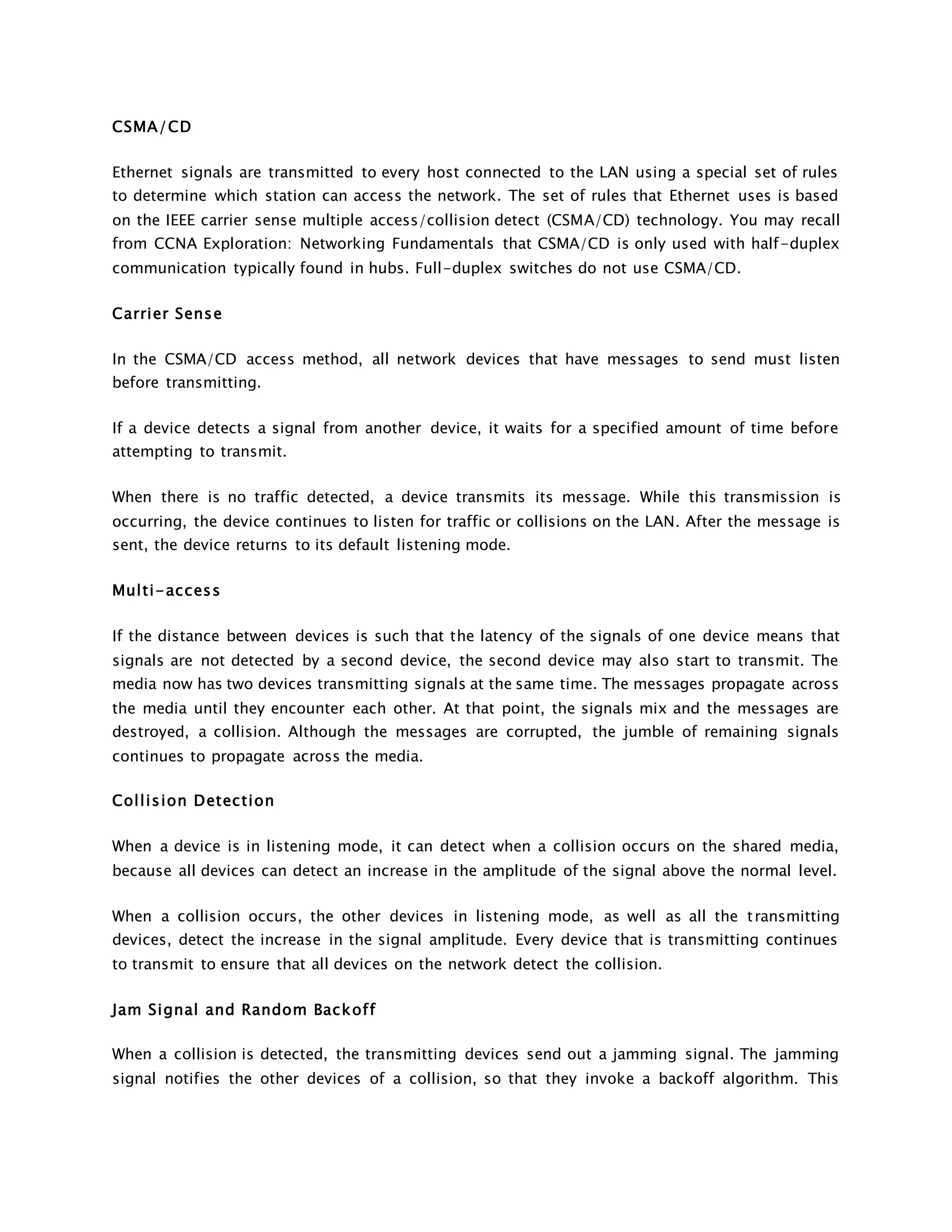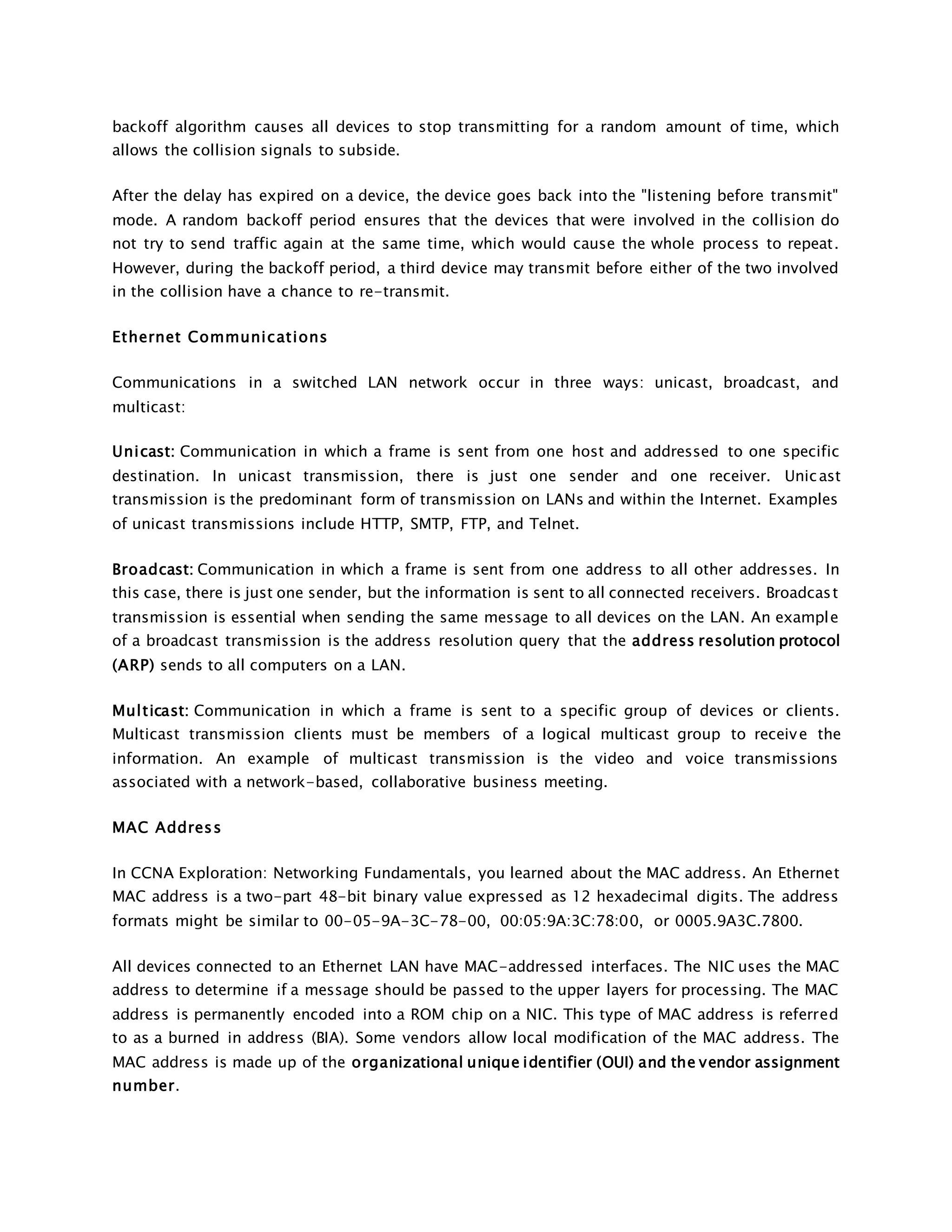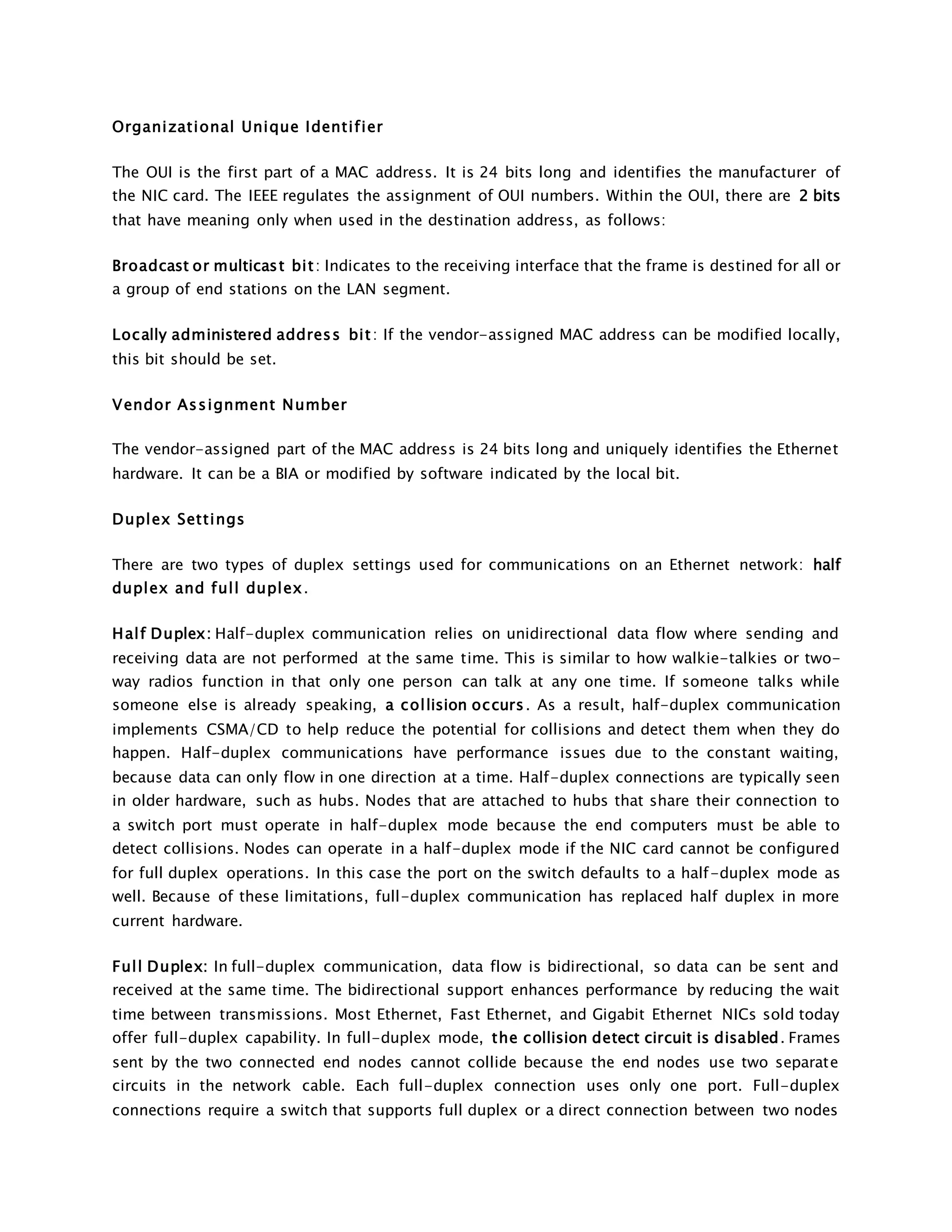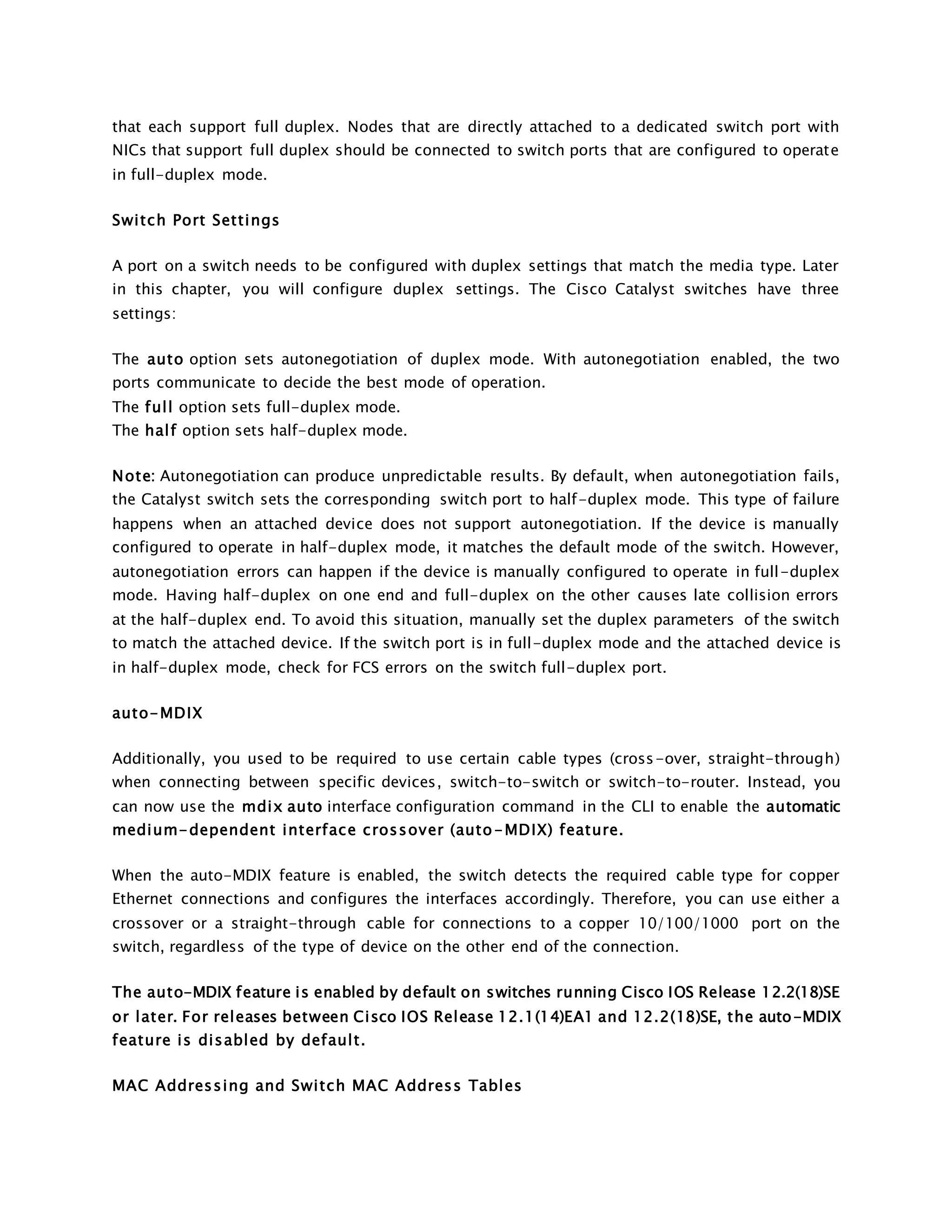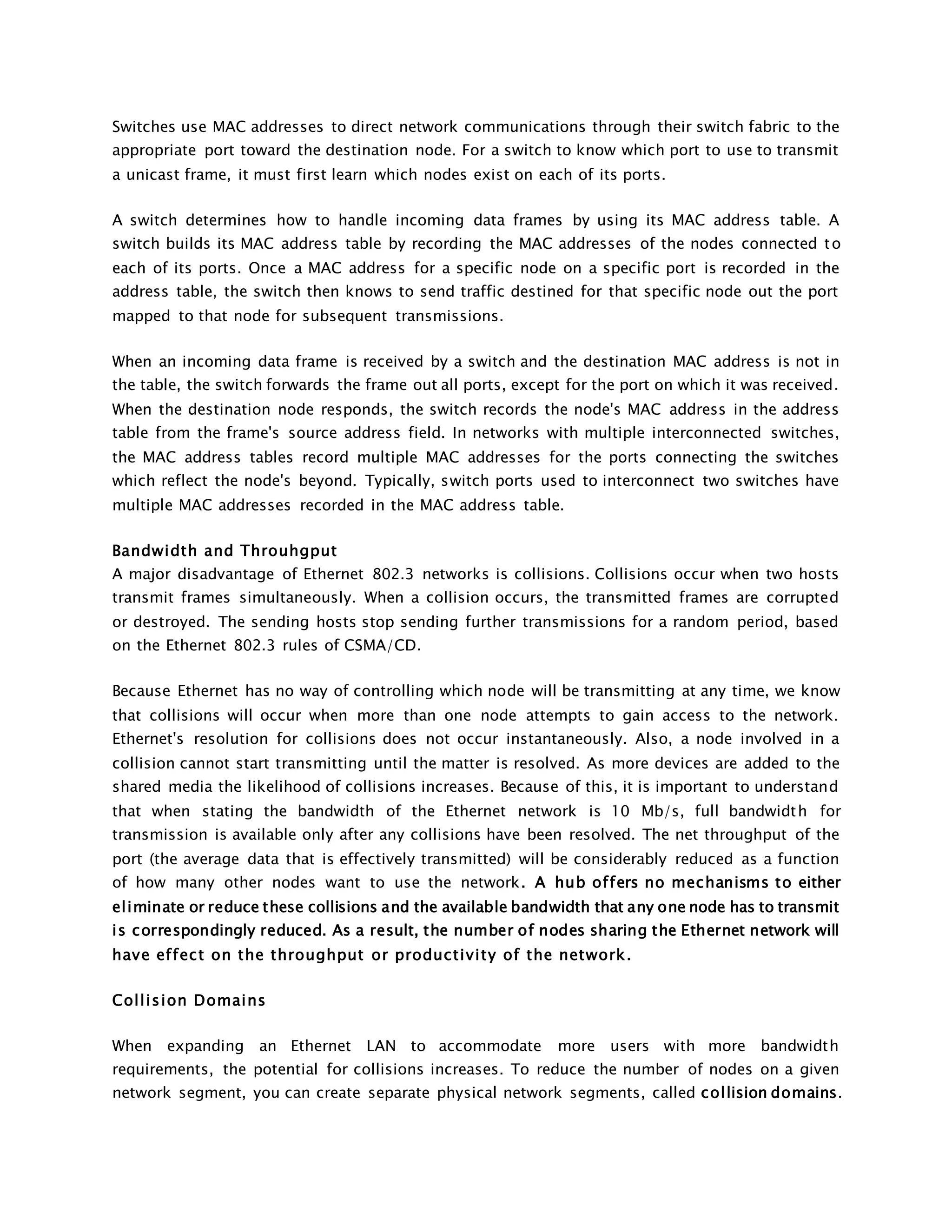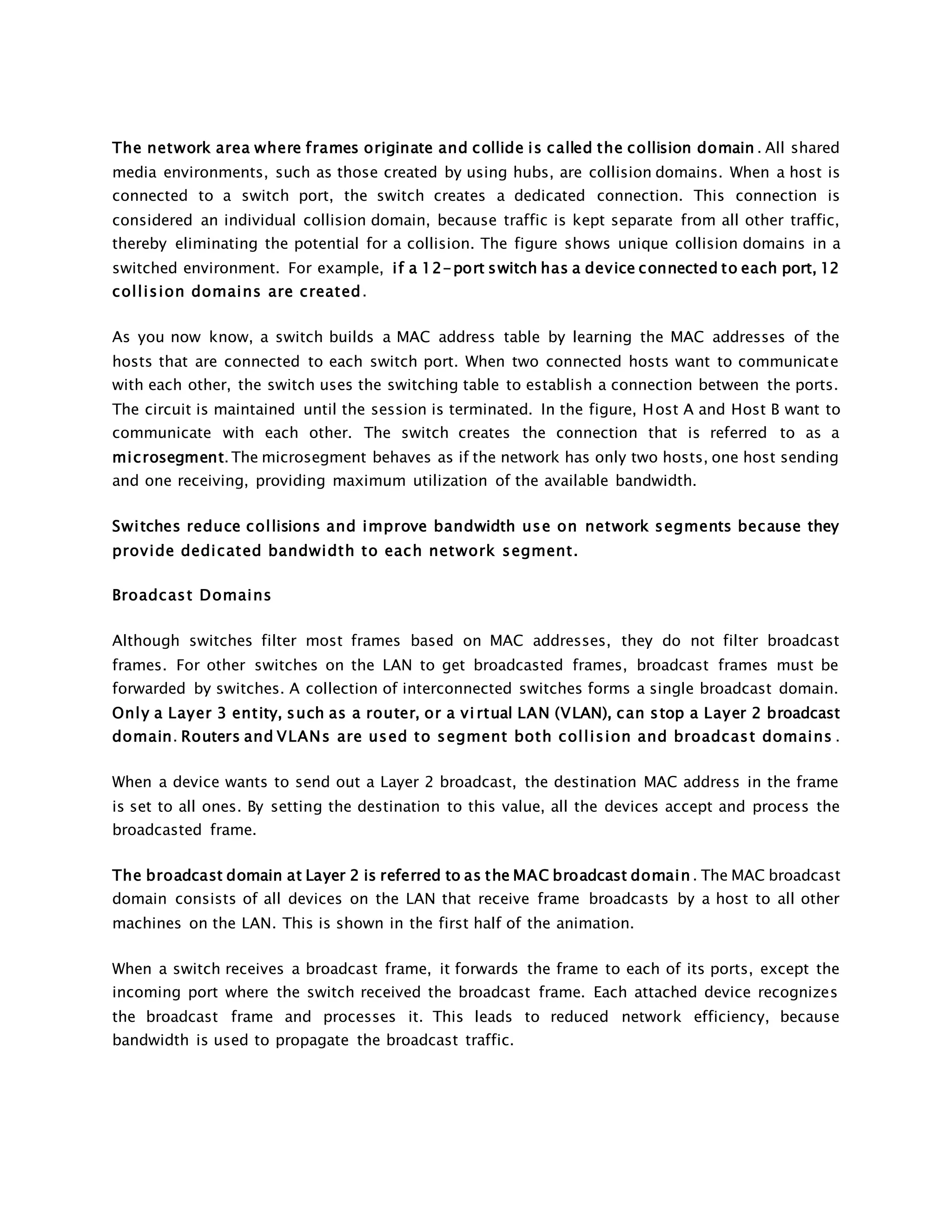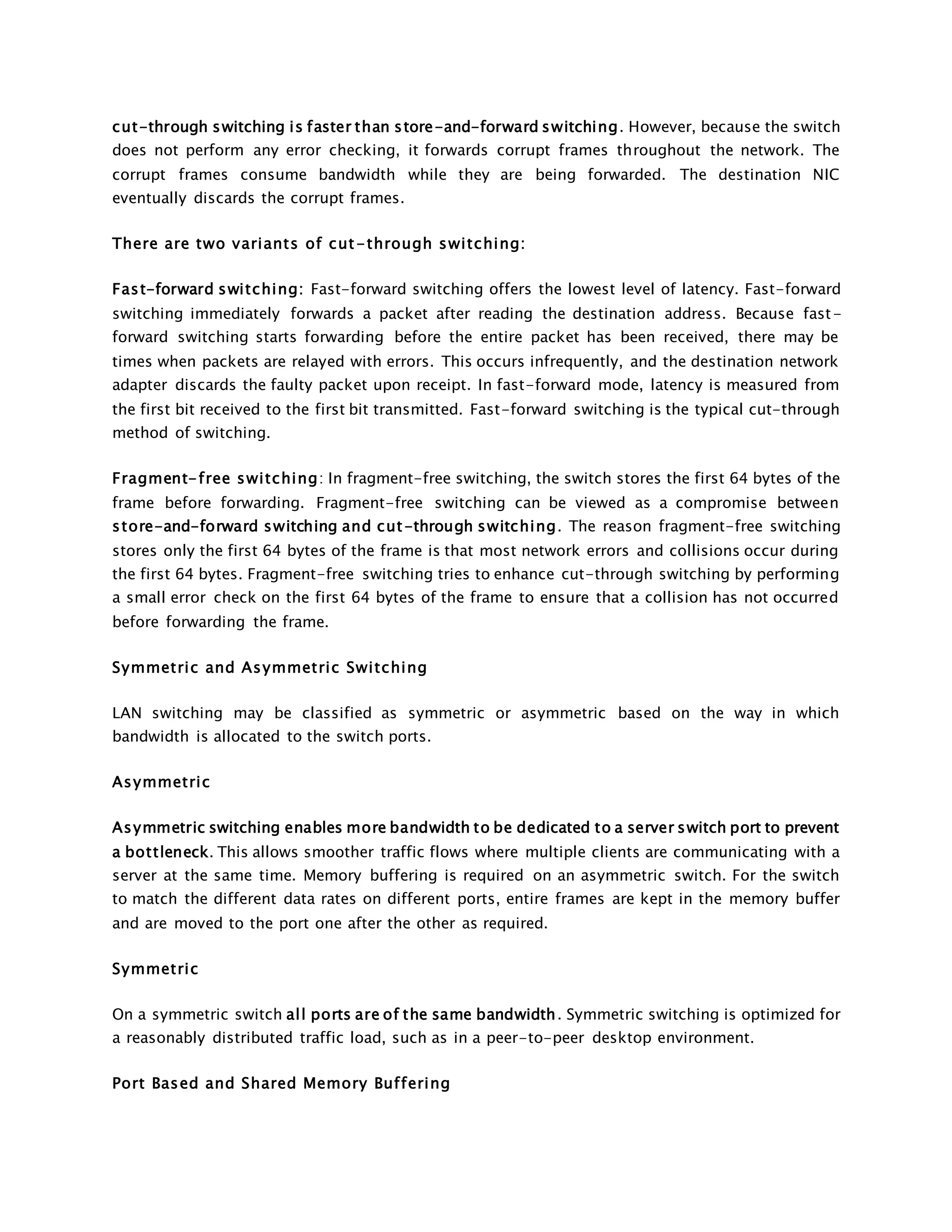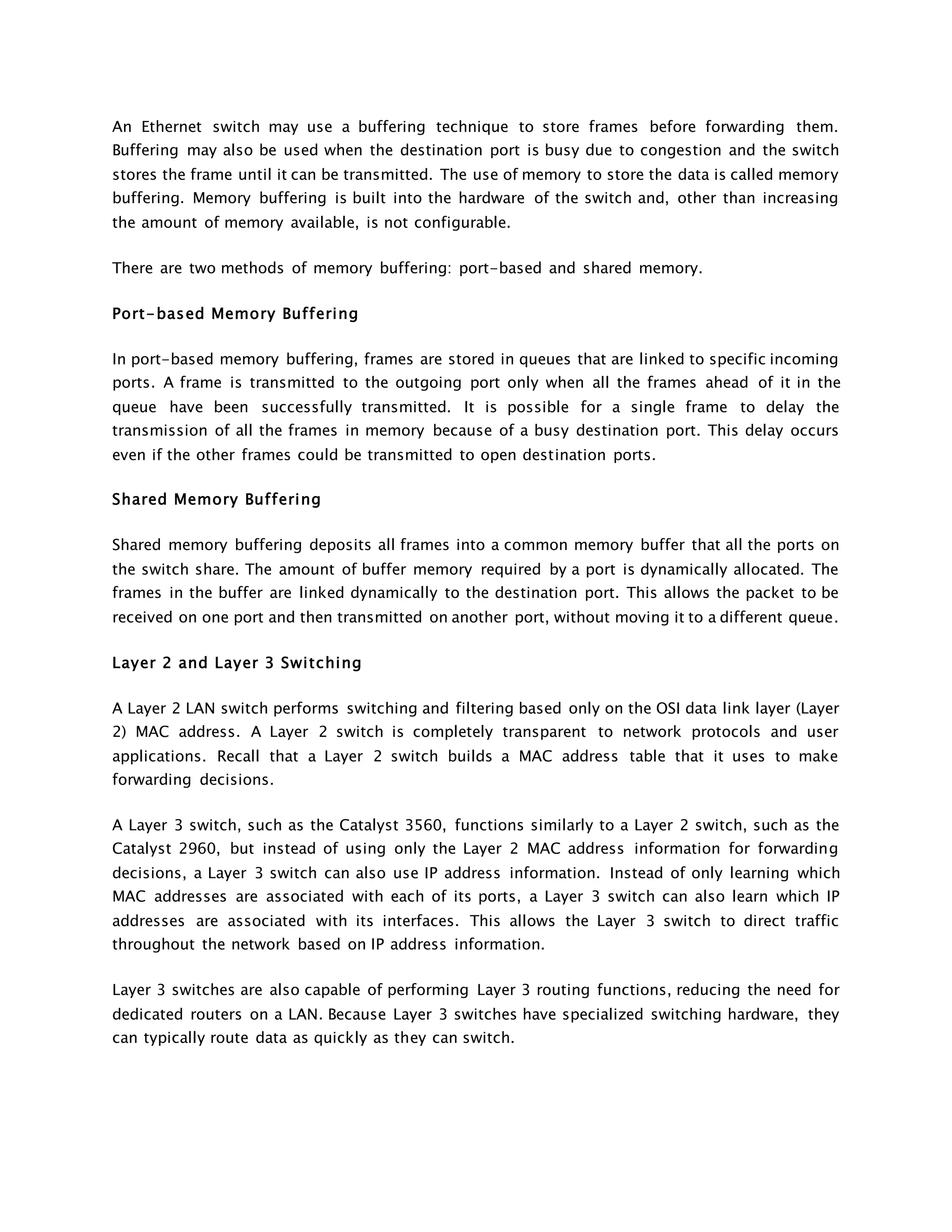The document discusses Ethernet communications and switching technologies. It describes CSMA/CD and how Ethernet devices access the network medium. It also explains half-duplex and full-duplex communication, how switches learn MAC addresses to reduce collisions, and the difference between collision and broadcast domains when using switches versus hubs.
